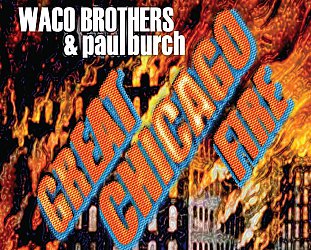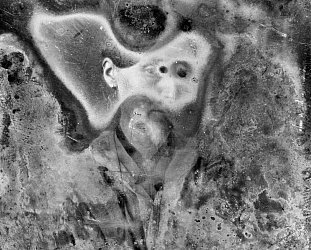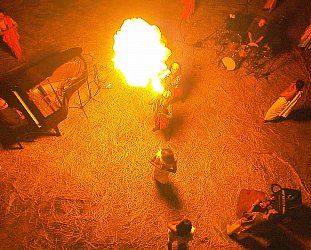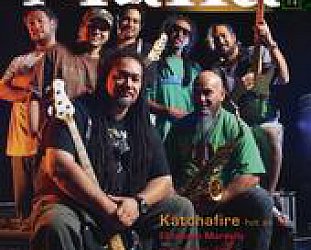Graham Reid | | 2 min read
Gopuru/Tuna Swimming
.jpg)
About three years ago when I was regular guest on Karyn Hay's now defunct Radio Live nighttime show I would play new (and obscure old) music for an hour every fortnight. Much of it was challenging or different, and e-mails would come in asking for more . . . or no more.
The music ran the gamut from rock and hip-hop to quasi-classical minimalism and old blues, something to annoy everyone you might say.
The biggest favourable response to anything came when we played a piece by Gurrumul, a singer from Australia. It was a track from his Gospel Album.
People wanted to know more and who this guy was.
I had presumed the story of this blind, reclusive Aboriginal singer from the remote far north on Elcho Island near Darwin was well known given he'd already had a few acclaimed albums out, had toured widely to enormous popular and critical acclaim, had performed for the Pope and the Queen, been on the cover of Australian Rolling Stone . . .
As I mentioned in a profile at Elsewhere in 2011, there isn't a didgeridoo anywhere near him and his ethereal and holy voice was ideally suited singing gospel (in his own language) on that subsequent album.
When he died in 2017 there was a considerable outpouring of grief and the accolades continued to come. He was a cultural ambassador without ever adopting that role and among those who hailed him were Sting (“the voice of a higher being”), Elton John and Quincy Jones.
What was also remarkable about Gurrumul was how his voice could move between different musical settings from folk to gospel to soul and piano ballads.
But few could have anticipated this album completed just weeks before his death: it brings together ancient chants (all vocals by Gurrumul) with contemporary orchestration which has reference points in the holy minimalism of Arvo Part, the exciting repetitions of early Philip Glass and the drama of contemporary soundtracks.
It is unlike any other album in his short catalogue, and probably quite unlike anything in your collection.
It's hard to imagine such an ambitious and culturally sensitive project would have ever been done previously, where the rhythms of chants find their counterpart in repeated orchestral passages and where his voice – often previously elevated and occupying rare air – here reaches back to ancestral origins in songs which are arranged as meditations on the natural world, tradition and a creation cycle.
Djolin opens like a tight Glass piece but the chant from Gumatj clan (he scrupulously consulted with elders) adds further tension as the melodic figures are reduced to essences then the chant returns with even greater urgency.
Gapu has a rare stridency, like a culture on the move into a new world.
There are musical settings which are almost baroque in their grandeur and the orchestrations were written by Erkki Veltheim, Gurrumul's producer/friend/spokesman Michael Hohnen and Gurrumul himself (who was on the periphery of Yothu Yindi and wrote for them, was in the Saltwater Band and played piano and guitar).
The album – which went to number one on the Australian charts – has members of the Australian Chamber Orchestra and Sydney Symphony Orchestra playing these pieces which written and recorded over a number of years but had all the elements in place when Gurrumul died suddenly at 46.
This is an unusual, not to say extraordinary, marriage of cultures, musical styles and histories . . . and while not the easiest starting point on Gurrumul is a testament to a blind artist with real vision.
For more on Gurrumul at Elsewhere including earlier album reviews, start here.





post a comment